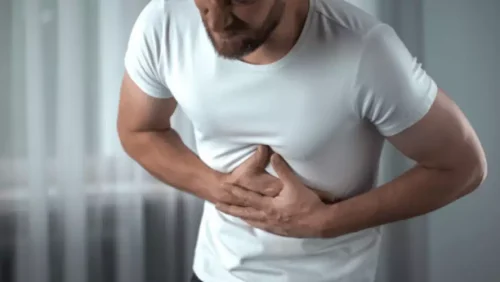
Despite its numerous effects on behavior, alcohol may not encourage aggressive behaviors equally in all situations. For example, alcohol-induced aggression is regulated by situational factors like provocation [288], social factors [289], and drinking environment [290]. The propensity toward alcohol-induced aggression may be individually driven by personal expectations of the effects of alcohol, by previous experiences of violent behavior, and by the perpetrator’s traits and attitude [289,291].

The Truth Behind Alcohol and Anger
Finally, the VTA in itself and especially its primary dopaminergic cell population projecting to the LS were recently demonstrated to powerfully modulate aggression in rodents [94]. On a molecular level, dopamine 2 (D2)-receptors expressed on GABAergic neurons were identified as key players mediating such behavior [63]. Interestingly, winning “mice territorial disputes” was shown to prime VTA-to-NAc innervations, making the occurrence of aggression more likely [95].
Alcohol and Aggression: Insight from Clinical Studies
GABA is the inhibitory neurotransmitter in the central nervous system and binds to two classes of receptors, the GABAA receptor, a ligand-gated ion channel, and the GABAB-receptor, a metabotropic G protein-coupled receptor [183,184]. Both received substantial scientific attention in the context of aggression, especially since it became apparent that alcohol mediates some of its CNS effects through GABAergic receptors (for a summary of earlier research, please see [185]). Dopamine is a neurotransmitter attributing salience to stimuli, generating perceptional valence, and thereby promoting motivation to act. Dopamine asserts control over neuronal activity via two groups of dopaminergic receptors—the d1-like and the d2—like family.

Why do only some individuals become aggressive under the influence of alcohol?
Males are more likely to express aggression in a physical and/or direct form, whereas females are more likely to express it in an indirect form. It has also been reported that both the males and females are equally aggressive when verbal aggression is at play (Archer, 2004; Björkqvist, 2017). In an experiment conducted by Giancola and Zeichner (1995), 128 participants (64 males and 64 females) https://ecosoberhouse.com/ performed a task where they gave an electric shock to the fictional opponents, which included both the genders. The researchers found that the intensity and duration of shock were higher in the men from the alcohol group, while only shock duration was increased in women. They also noted that men were highly aggressive toward the same gender, while women were aggressive regardless of gender.
People all react to alcohol differently and may exhibit unique behavior when they are intoxicated. However, there is a very strong correlation between alcoholism and anger or even in some cases violent behavior. Some individuals may be more likely to become aggressive than others but in general the majority of aggressive acts committed tend to involve alcohol.

Alcohol and Aggression: Insight from Preclinical Studies
The generalizability of the study results may be limited by the low ecological validity of the laboratory environment. Certainly, there are contextual differences between a university laboratory and a barroom or house party, including expectations for social conventions and the effects of alcohol. Even so, we consider the high internal validity to be a strength, particularly when alcohol’s effects on behavior may operate via an attentional mechanism (Steele & Josephs, 1988) and complements the external validity of earlier field research (Hales et al., 2015). Buckingham and colleagues’ (2016) laboratory alcohol administration design addressed some of the above limitations. However, the mean peak BrAC was 0.050% indicating a dose insufficient to potentiate aggressive behavior (Duke et al., 2011).
Antisocial Personality Disorder, Alcohol, and Aggression
1. Serotonin, Dopamine and Their Degradation
- Further research into alcohol-related aggression in alcohol-dependent patients receiving treatment has shown that the degree of violence correlated to the level of alcohol consumption.
- The study does not have the statistical power to settle inconsistencies in the literature, but it is nonetheless informative, and is reported as such.
- A task that requires participants to press a key in response to one type of stimulus and not to press a key when another stimulus type occurs.
- This information, which could actually help you to hold back from being aggressive, is typically less salient than the overt, verbal insult.


